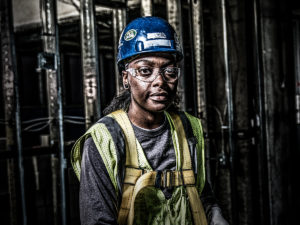Apprenticeship Minnesota Provides Youth With Career Opportunities In Construction
As Minnesota’s economy continues to expand, there is strong demand for highly skilled construction workers. This need is especially true as construction industry observers look into the future and point to the large number of Baby Boomers and Gen Xers working in Minnesota’s construction industry who will retire in the years to come.
Rising to meet this need is Apprenticeship Minnesota, a program within the Minnesota Department of Labor and Industry that oversees registered apprenticeship programs offered in the manufacturing, healthcare, information technology, transportation and construction industries throughout the state. Apprenticeship Minnesota works with employers such as trade unions and construction companies to develop and promote apprenticeship programs that train workers for lifetime careers as electricians, plumbers, pipefitters, brickmasons, diesel mechanics and more.
The value of having a trained workforce can’t be underestimated. To build the structures that Minnesota needs to grow and thrive – hospitals, schools, factories, bridges, roads, office buildings, warehouses, airports, hotels, power plants, stores and restaurants, and more – Minnesota needs a large and deep pool of skilled workers.
“Apprenticeships offer a great way for businesses to attract new talent and strengthen the relationship between the business and employee,” says Rick Martagon, the State Program Administrator for Apprenticeship Minnesota. “The program creates a solid base of highly skilled workers for our state’s employers while at the same time, employees learn while earning a paycheck. It’s a win-win for everyone and one of the best investments our state can make in its young people and our economy.”
Apprenticeship Programs
Registered apprenticeships are offered in 303 trades and can range in length from one to five years with a minimum of 144 hours of technical instruction (classroom) and 50 hours of safety training. All apprenticeship programs listed on the Apprenticeship Minnesota website are registered and accredited with the State of Minnesota and meet both state and federal standards. These rigorous standards allow apprenticeship graduates to find work in all 50 states. To employers, completing an apprenticeship program is a credential – similar to obtaining a person’s undergraduate college degree – that a person has put in a certain number of hours studying a specific skill.
On top of completing an apprenticeship, some professions (electricians, plumbers, pipefitters, etc.) require a person to take an exam to receive a license to practice their trade as a professional in Minnesota.
“These are very structured, rigorous programs,” says Martagon, who himself is a journey-level tile layer. “It’s on par with going to college. In fact, some of our programs partner with community colleges throughout the state so apprentices earn college credit while they learn.”
Though apprenticeship programs are rigorous, they offer anything but the typical method of learning. In contrast to the typical classroom setting where the transfer of knowledge from senior people to newcomers is very systematic, each program has its own process of training mentors and teaching apprentices.
“The learning that takes place happens in many ways,” says Martagon. “Instead of spending all your time in a classroom, apprenticeship programs offer a hybrid learning model that combines classroom, online, and in-the-field learning.”
Taught by skilled workers who are masters of the profession, apprenticeship programs establish a mentorship between those journeyworkers and apprentices who work side by side to learn a craft.
“In addition to hands-on learning experiences and the opportunity for college credit, apprentices in the program are paid based on an earn-while-you-learn progressive wage scale that starts apprentices at an entry-level wage, which increases as they grow their skills,” Martagon says. “Apprentices earn a paycheck from day one with little or in most cases zero debt.”
National Apprenticeship Week
Each year, during the second week of November, Apprenticeship Minnesota celebrates National Apprenticeship Week with information sessions held across the entire state that showcase registered apprenticeship programs, especially providing information high school students.
“It’s about providing high school students the opportunity to learn about the registered apprenticeship opportunities,” says Martagon. “It’s so hard for a 17-year-old to decide what they want to do for the rest of their life, so helping these students become aware of the pay and education the skilled trades can offer is very important. These National Apprenticeship Week sessions are good for students of all levels and backgrounds.”
“I couldn’t see myself doing anything else, I enjoy sharing information about registered apprenticeship with anyone I can,” says Martagon. “It’s important to communicate that these programs exist, especially to communities that have not been traditionally part of the skilled trades such as women or people of color.”
“For people interested in Apprenticeship Minnesota, I suggest searching by industry, county, and occupation on our website,” adds Martagon. “Every program is a bit unique.”
Get More Information About Apprenticeship Programs
If you’re wondering if an apprenticeship program might be the right choice for you after high school, visit ConstructionCareers.org. It’s a website developed for high school students, their parents, and Minnesota educators to help students better understand if a career in construction is the right choice for them. To gather specific information about available apprenticeship programs available in Minnesota, visit Apprenticeship Minnesota at https://www.dli.mn.gov/business/workforce/apprenticeship.
